A critical analysis of accounts of events in Tibet between 1949-59
The major events took place between 1949-1959 in Tibet, during the People’s Republic of China’s invasion of Tibet was ambiguous on how Tibetan and Chinese percieved the events and ideological contradictions on the line of Tibetan issue at that time. The Tibetan Government in Exile, which is the exile government headed by the Dalai Lama after seeking asylum in India claimed that “With a written history of more than 2000 years, Tibet existed as an independent sovereign state prior to Chinese rule. As recently as 1914, a peace convention was signed by Britain, China and Tibet that again formally recognised Tibet as a fully independent country. But having no representation in the United Nations, the world largely stood by and allowed China’s occupation and destruction to happen.” However the People’s Republic of China claimed in their official white paper that “In the mid-13th century, Tibet was officially incorporated into the territory of China’s Yuan Dynasty. Since then, although China experienced several dynastic changes, Tibet has remained under the jurisdiction of the central government of China.” , so due to the historical different claims on the Tibetan issue, the Chinese and Tibetan views on the major events took place during the Chinese invasion of Tibet is contradictory and different. Moreover, Tibet being forbidden land behind the Himalaya left centuries without worldly exposure and knowledge and totally conserved with Tibetan tradition and culture, internationally Tibet is forbidden kingdom and no other nations have much knowledge and historical diplomacy with Tibet except neighbouring countries like British India. So now Tibet is internationally autonomous region within the constitutional framework of PRC and many of Tibetan is refugee all across the globe. Tibetan Government in Exile based at Dharamshala, North India seeks greater autonomy within the PRC constitution which was basically denied by the PRC under the ground of seeking semi-independence, independent-in-disguise.
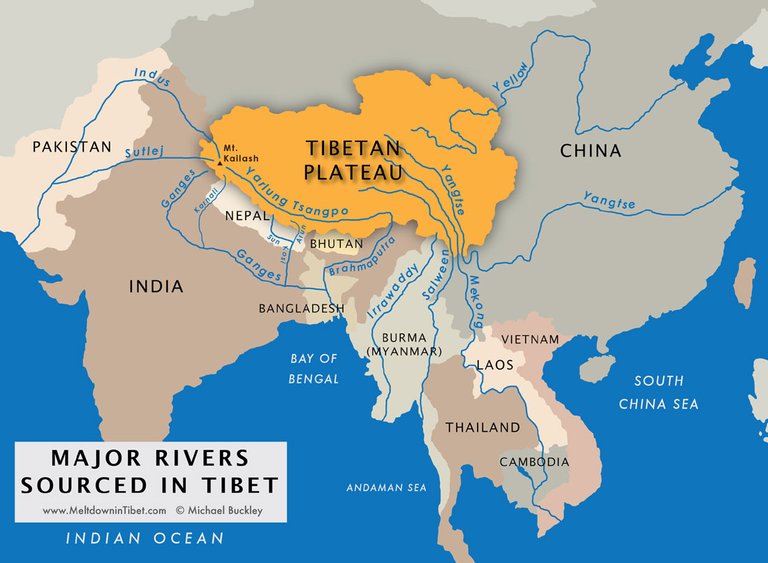
INTRODUCTION…..
The historical accounts from the Chinese and Tibetan perspectives of events taking place between 1949-59 have been controversial. There is always problem of source material, on which any objective research must be based, so research and study into the history of Tibet is matter of polemical debate between those who support either the Tibetan or the Chinese claims. In this essay, I have tried to base my findings using source materials from both sides to bring a well-balanced, unbiased justification of the events of 1949-59.
Geographically, Tibet is a plateau region in north of the Himalayas. Tibet is the highest region on earth, with an average elevation of 4,900 metres (16,000 ft) 1 It is sometimes referred to as the Roof of the World. Tibet having a history of at least 21,000 years since the first human inhabitation and civilization is rich in cultural heritage and traditions. Geographically it is significant to neighbouring countries since major river systems arise from Tibet and most of the civilisation of neighbouring countries depends on these river systems. In fact, the Tibet issue affects lots of other countries.
The end of the Second World War dramatically changed the power balance in Asia. India gained her independence in 15th August 1947 and took the political privileges enjoyed by British in Tibet . The Japanese was defeated from the Asian mainland, which gradually led to the victory of the communist in China. After a decade long combat in the Chinese Civil War which ended in 1949 with the Communist Party of China in control of mainland China, and the Kuomintang (KMT) retreating to Taiwan, Mao Zedong proclaimed the People’s Republic of China on 1st October 1949. Shortly after that, the People’s Liberation Army (PLA) entered into Tibet to liberate Tibet from what the Chinese saw as a, the society of feudal serfdom under the despotic religion-political rule of lamas and nobles, a society which was darker and more cruel than the European serfdom of the Middle Ages.2 However, Kashag the-then Tibetan Government in Lhasa claimed it as an illegal Chinese invasion of Tibet and sought for UN and international support. The gulf between the two positions was already very wide that it’s impossible to reconcile them from the historical context.
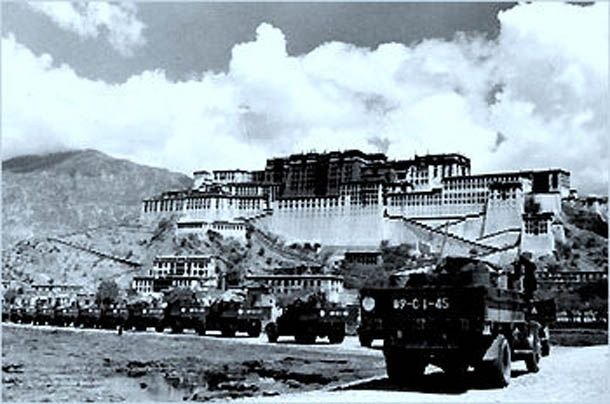
- PLA ENTRY INTO TIBET.
After the proclamation of the establishment of the People’s Republic of China in Tiananmen Square on October 1st 1949, the Communist party made it clear that the last remaining task for the victorious People’s Liberation Army (PLA) was the liberation of Tibet from feudalism and imperialism. In 1948, the Chinese Communist party had sent spies in Tibet to see how strong the Tibetan army was and whether the Tibetans were receiving military aid from any foreign power.4 This clearly suggested that the Chinese suspected that foreign powers were in Tibet helping them, something which the Tibetan Government had denied. However Chinese accused American Lowell Thomas of exploring the possibility of American aids to Tibet to help the Tibetan resistance to the People’s Liberation Army. 5At that time, there were only six Europeans in Tibet and none of them had anything to do with military matters.
The high-ranking Communist Party members had already developed strategies for the incorporation of what they called ‘Chinese National Minorities’ within the framework of the People’s Republic of China, which included Tibet as one of its national minorities. On 24 September 1949, the then Commander-in-chief of the PLA, Zhu De, in a speech to the Chinese Peoples’ Political Consultative Conference, he said; ‘ the Common Programme demanded the waging of the revolutionary war to the very end and the liberation of all the territory of China, including Fermosa, the Pescadores, Hainan Island and Tibet’.6(dragon in the land of snow pg 3). The new communist government regarded Tibet as Chinese territory at that time and Tibetan issues were meant to be dealt under the rule of ‘National Minority’. At the same time, the Tibetan Government in Lhasa clearly saw that Tibet as an independent country since the ‘Declaration of independence’ by His Holiness the XIIIth Dalai lama in 1912. 7 Therefore, when the Tibetan Government in Lhasa heard the Chinese claims, their immediate political reaction was to remove any remnant of Chinese authority from Tibet, though Tibet was not militarily and socially equipped to oppose the Chinese force. The Kashag, appointed the Tsipon Namseling(note 1) to check the pro-Communist associate with Chinese Mission in Tibet.
Actually- since the 18th century, the Chinese government had established representatives in Lhasa called; ‘Ambans’ and the Ambans were the symbolic Chinese authority in Tibet.Tthey didn’t have real authority in Tibet. After the fall of Qing dynasty1912, the Amban and his military escort were expelled from Lhasa, but were again renewed in 1934. Moreover, the Guomindang Government had not surrendered China’s claim that Tibet was an integral part of China and clearly saw that opening of their mission in Lhasa as an indication of China’s sovereignty in Tibet. However, Tibetans never admitted that the presence of the Chinese mission in Lhasa meant they had acknowledged Chinese sovereignty. At that time, the British mission was also established in Tibet.
The expulsion of the Chinese mission from Tibet marked a new phase in the Sino-Tibetan relationship. Tibet had declared its desire to remain independent, however, this desire provoked the Communists even more determined to gain control of Tibet. Irreconcilable objectives between Tibet and China manifested clearly. A month after the Communists assumed total control over China, the Tibetan Cabinet received alarming information from the then Chamdo Governor Lhalu, about Chinese strong forces moving along the eastern border. The Tsongdu(Tibetan National Assembly) was held in Lhasa immediately which composed of Kashag ministers and high ranking lamas and governors. The Assembly agreed that Tibet had neither the material resources nor the arms to defend its integrity, so decided to make an urgent appeal to other countries and delegates were send to the United States of America, India, Britain and Nepal to ask for help.8 Chinese government accused this as a Local government’s separatist movement for Tibet’s Independence . However, Tibet doesn’t receive any military support from other countries like Britain, United States due to geographical position and was left alone. Tibet had an inadequate stock of ammunition and arms which they received from Britain before 1949 and later in June 1949, the Indian Government had supplied a limited amount of arms and ammunition. In terms of military and army force, Tibet had only strength of 8500 officers and men, who were actually meant for stopping unauthorised travellers into Tibet. TheKashag sanctioned further military expenditure to defend the Chinese military force.
Beijing at the same time recognised Tibet’s appeal for the foreign support as an urgent matter separating Tibet from the motherland China and warned all nations not to interfere in the internal matter of China. Beijing accused any help extended to Tibet from other nations as a part of imperialist aggressors’ attempt to carve up China. The Chinese were frustrated that Tibetans seemed to be more concerned with internationalising the Tibet issue and China feared foreign intervention in Tibet.
Soon afterward, the situation in eastern Tibet became precarious. Ngabo Ngawang Jigme became the governor of eastern Tibet and at the same time, Communists strengthened military control over Kham and Amdo in eastern Tibet.
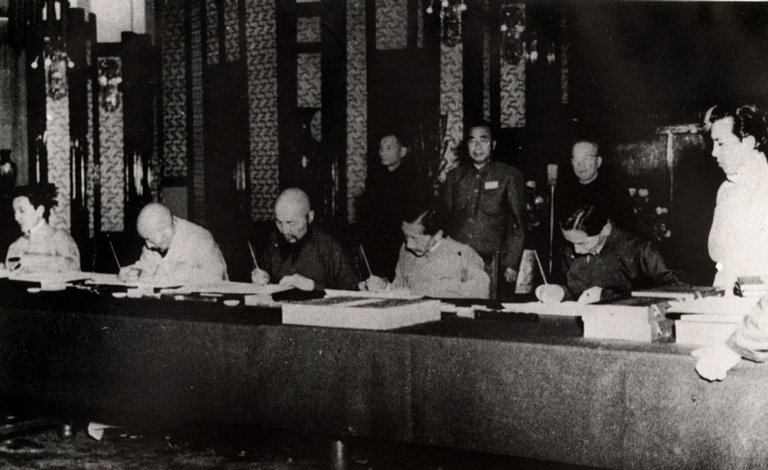
17-POINTS AGREEMENT ( May 23, 1951)
Each day, situation in the Eastern Tibet was getting worse and extent to which Tibetan army can hold the land was also shrinking as the People’s Liberation Army marched forward. At the end of the 1950, eastern Tibet frontier was captured by the PLA and 180 Tibetan were killed and 4317 were surrendered along with then Governer Ngapo. 9 To which Chinese government called liberation of Chamdo. 10 At the sametime, Kashag was busy with missions to seek international support for the Tibetan cause in UN, however international political direction and trend was towards the Korean War at that time, which drew international focus away from Tibet. Young Dalai Lama was enthroned and soon after moved to Yatung to escape in the case of PLA’s entry into Lhasa, the capital city of Tibet. His Holiness The Dalai Lama appointed two prime ministers (Lobsang Tashi and Lukhangwa) before he left Lhasa and gave full authority unless in the matter of utmost importance. 11Provisional government was established in Yatung in 1951.
In 1950, CPC Central Committee sent delegations to Lhasa to pursuade the 14th Dalai Lama and kashag to send representatives to negotiate on liberation of Tibet. Young Dalai Lama disheartened by the Britain and Indian Government’s reaction to the Tibetan issue on the international scenario opted for the firm negotiation in order to stop the marching of PLA into Tibet and destruction of Tibetan culture. His Holiness the 14th Dalai Lama authorised the Ngapo Ngawang Jigme(Chinese Ngapoi) as he requested to lead the team for the negotiation along with four other representatives. Tibetan delegates were welcomed to Peking and introduced to the Chinese representatives (Chief delegate; Li Wei-han (Chairman of the Commission of Nationalities Affairs) As the first formal meeting began, Chinese representatives produced and introduced a ready-made ten-points draft agreements under the ground of Tibet being part of China historically. Chinese Official White Paper 2011 states that all the representatives got a sealed plenipotentiary certificate where Tibet is a part of China and some other statements were produced. 12 Tibetan delegates were given no option but to accept the Tibet as part of China and discuss the Tibetan local Government Issue with Central Government in order to enhance ethnic solidarity and safeguard national unity. Having stated that Tibet is part of China, both the sides have no common ground on which negotiation to be discussed. Bapa Phuntso Wangye(Note 2) in his autobiography stated that the discussions were difficult from the start, because both sides had very different conceptions of history. 13Tibetan delegates didn’t accepted Tibet as part of China whatsoever. However, Chinese Government stated that Tibetan delegates were happy with the agreement by claiming Ngaboi’s not-so-cleared recalled on the problem, ”the basic standpoints of the representatives of the two sides were the same” 14Amid this sort of no common ground at all to negotiate initially, Chinese delegates finally produced a revised version of draft agreement with seven more points added. This 17-points Agreement was presented as an ultimatum and any alterations and suggestions were not advised. According to the 14th Dalai Lama’s biography, Tibetan delegates were threatened and warned strictly to sign the Agreement, otherwise Tibet would be invaded violently and further destruction would be likely happened. Duplicate seal was made in Peking. Moreover Tibetan delegates were not allowed to refer to the 14th Dalai Lama and the Tibetan Government. However, Chinese Official White Paper 2011 stated that “Channel for the Tibetan delegation to ask for instructions from the Dalai Lama and the Kashag was always unimpeded”. Finally on 23rd May 1951, the so-called 17-points Agreement was signed under duress. Dalai Lama and his government learnt it only after it was signed and announced through radio. It was said that Dalai Lama was “shocked” to learn that the agreement was signed without any authority from him and Government. Ngabo was actually not authorized to sign such an important document without consultation. However in Chinese official white paper 2011, Beijing claimed that Dalai Lama sent a telegram to Chairman Mao on October 24 expressing his support for the agreement and stated that delegates have “full authority” .15Later when His Holiness the 14th Dalai Lama fled to India, he repudiated the Seventeen Points Agreement on the ground that Chinese violated the terms of agreement.16
Soon after, Preparatory Committee for the establishment of Autonomous Region of Tibet (PCART) was set up and centuries long Tibetan Government was dissolved. Dalai Lama was appointed chairman of the committee and Panchen Rinpoche and Zhang Guohua were appointed Deputy Chairman. Twenty of the members in PCART were Tibetan, but from the Chamdo Liberation Committee and most of them support Chinese decisions. In fact, all the power was exercised by Chinese and moreover all basic policy was decided by another committee called Central Committee of the Chinese Communist Party.
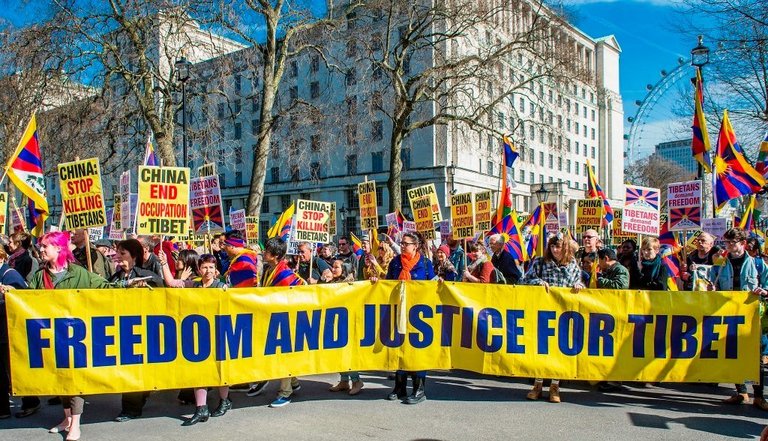
TIBETAN RESISTANCE MOVEMENT
Soon after the 17-points Agreement, PLA started entering into Lhasa as per first point of the Agreement and slowly occupying whole Tibet. Large amount of PLA into Tibet created problems to the Tibetan in term of accommodation and food supply which resulted into violence against each other. Thousand of Tibetans in Kham and Amdo regions moved towards capital Lhasa and started forming resistance movement against Chinese occupation. In 1956, Gyalo Thundup, brother of His Holiness the Dalai Lama seek military help from United States and soon after Central Intelligent Agency(CIA) secretly tried to help the Tibetan Resistance Movement known as “four rivers, six ranges” headed by Gompo Tashi to fight against the Communist occupation of Tibet. Later on July 1958, first CIA dropped arms and ammunitions for the Tibetans, which was later accused by the Communist Party as a western aggressor’s plot to carve up China. Tibetan Resistance Movement’s guerrilla campaign against PLA troops initially won minor battles, however due to PLA’s military superiority and huge number of armies; Tibetan Resistance Movement was unsuccessful to prevent and resist the Communist occupation of Tibet and was later established at Mustang in Nepal to continue carrying out campaign against Communist China’s illegal occupation of Tibet. China recognised it as an illegal movement of Dalai clique to separate Tibet from motherland China and destroy the stability and unity of Great China.
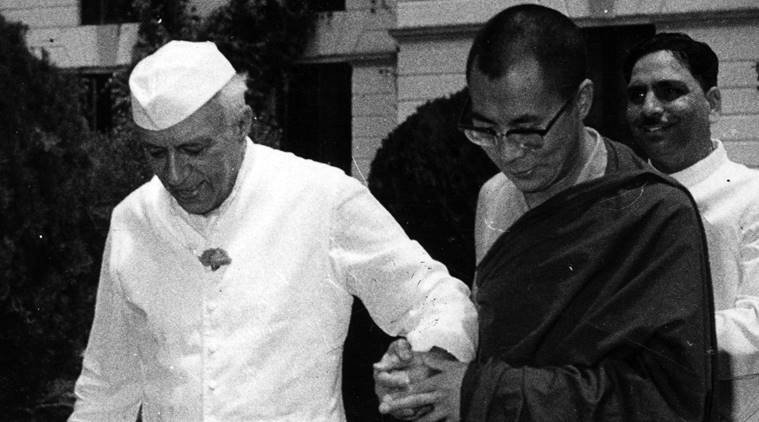
1959 NATIONAL UPRISING AND DALAI LAMA’S ESCAPE TO INDIA
On March, 1959, Chinese commander Tan Guansan invited His Holiness the Dalai Lama for a theatrical performance in Chinese military camp which His Holiness the Dalai Lama accepted. However the Tibetan officials were not informed until 9 March, which was a day’s ahead of actual performance. No consultation and arrangement was made until then. This left doubt and suspicions to the Tibetan officials and quickly news was spread deliberately to the common people with the rumour that His Holiness the Dalai Lama would be abducted by Chinese during the show. Some of Tibetan officials requested Dalai Lama directly not to attend the show due to terms and conditions imposed by Chinese to attend the show, but Dalai Lama didn’t took the request seriously and decided to attend. So some of junior officials spread the news that Chinese would abduct Dalai Lama to muster the public support to prevent Dalai Lama’s visit. It was known that Tibetan official Barshi was man behind this rumour to prevent Dalai Lama’s visit to the camp.This information sparked the uprising very next day. Thousands of Tibetans surrounded Norbulingka, residence of His Holiness to request and prevent Dalai Lama to the show. All the exits of Norbulingka were heavily surrounded by the Tibetan people and exits were checked thoroughly. There is no Chinese counterclaim on the issue of Chinese plot to abduct Dalai Lama. Next morning on 10th March, due to public gathering and riot in front of Norbulingka, Dalai Lama was failed to attend the show. Most of Tibetan elites had no information about the demonstration and were reached to the military camp for the show while common people were protecting and demonstrating the Chinese rule. Chinese officials decided to deploy troops to curb and suppress the demonstration. Dalai Lama and Kashag were at middle between people and PLA. Finally, on the morning of 17th March, two shells were landed near the Norbulingka17 which led to the estimation of Chinese move to gain control of the city. The very night, Dalai lama and Kashag consulted the Nechung oracle,(note) who pronouced the unsafety of Dalai Lama in the palace. The Dalai Lama and entourage secretly fled from Norbulingka and escaped to India.
- Justification of Tibetan and Chinese claims and views.
It is difficult to justify the Tibetan and Chinese views on different accounts of events took placed between 1949-1959 due to historical implication about Tibet’s sovereignty. All the major breakdowns and implications come on the matter of whether Tibet is part of China or not. The question of Tibetan sovereignty is still arbitrary and whimsical, since Tibet is a forbidden kingdom isolated from rest of the world for long and there is no clear understanding and recognition of Tibet status to most of the nations around the world. This made the Tibetan issue limited, trivial and issue between China and Tibet. For Tibetans, it is Chinese aggressive and imperialistic ambition which destroyed the stability of peaceful religious nation. However for Chinese, it is great liberation of Tibet from serfdom and feudalism and a great success to unify whole China. Chinese official whitepaper states that, it was a Chinese national struggle against imperialist invasion to safeguard national unity and sovereignty. 18 Successive Chinese regimes take hold of strong nationalism and incorporate Tibet within the greater polity of China to avoid any humiliation from Western countries. Under the pretext of safeguarding Tibet from western imperialist force, China invaded Tibet and destroyed Tibetan culture and monasteries during the Cultural Revolution and totally ignored the national constitution which states to respect the languages and culture of minorities. Different claims made by the China during the 1950s have no historically substantial validity and most of them were propaganda and lies to the international bodies and nations to claim their sovereignty over Tibet. 17 Points Agreement is part of this propaganda, signed under the duress, but Communist China announced internationally that Tibet was happy to unify back into motherland China. PLA entered into Tibet to unify Tibet from imperialist aggressors, although there is no sign and trace of any western force in Tibet. This was sole basis for their excuse to liberate Tibet, although Tibetan people were contented with their status quo. Tibet being forbidden and isolated, had no diplomacy and strategic partnership with any other countries, put Tibet easily under the Communist trap and failed to raise her voice on international platform.
CONCLUSION
Both the Tibetans and the Chinese don’t want to complicated and correct their firmly held beliefs and claims. As a result of this denial of history, Tibet issue become an issue of one-sided and matter of blaming each other for responsibilities. The Tibetan elite blamed the Communist rule for all the destructions and tragedies, seeking image of total innocence. Actually some Tibet elite cooperated well with the Chinese and even tried in early 1950s to welcome Communist China. Similarly, Chinese leaders had no interest to listen the wishes of Tibetan people and considered Tibetan issue as domestic issue and tried all their military and political power to unify Tibet within the People’s Republic China. This way of looking at Tibetan issue from both the side had left Tibet a matter of choice for the international platform. However, the claims made by China in 1950s with regards to Tibetan issue were just propaganda and lack historical ground. Most of these claims were either self-made under a circumstances like 17 Points Agreement being signed under duress or have no historical validity. In 1950s, China made all their attempts to make different propagandas and lies on the international platform to refrains international community interfering in the matter and claim their sovereignty over Tibet by different means.

Wellcome to family :)
Welcome to the community!
Welcome 2 the community!
Wellcome to the community!
Welcome to Steemit @wangchen :)
Make sure to participate in this weeks giveaway to get known in the community!
Here are some helpful tips to get you started:
@reggaemuffin, the creator of this bot is a witness. See what a witness is and consider voting for the ones you feel are good for steem.
Excellent post! Upvoted and re-steemed. You got a new follower 😉
Thank you so much. I am following you too.
Welcome to steemit hope you enjoy it here!! Followed. Follow me back 😘